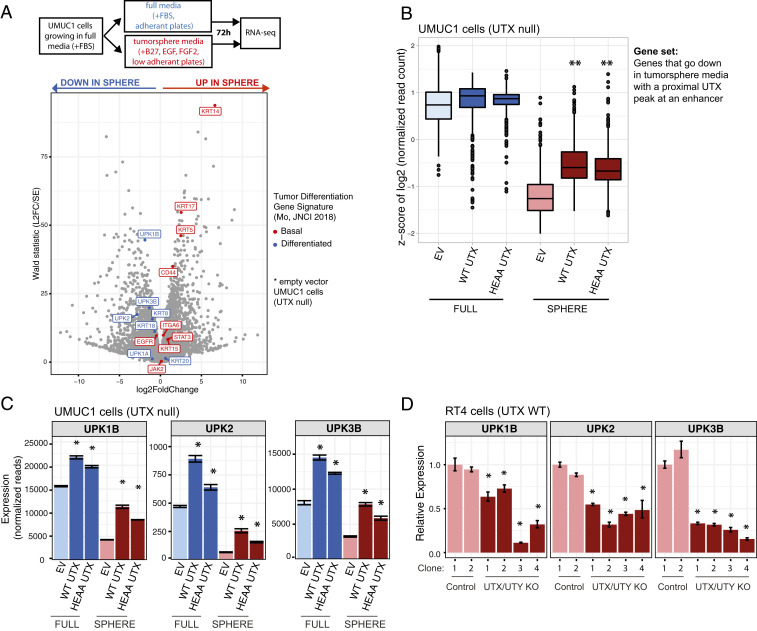Fig. 2.
UTX hinders the transition to a more stem-like cellular state by regulating bladder differentiation genes. (A) Volcano plot showing gene-expression changes in EV control UMUC1 cells in full media conditions versus tumorsphere media conditions, as measured by RNA-seq. Cells were plated and grown in the indicated media for 72 h before harvest. Genes known to be expressed highly in basal bladder tumors are highlighted in red, while those expressed in luminal/differentiated tumors are highlighted in blue (32). (B) Plot showing the distribution of z-scores for UMUC1-derived cell lines in both regular and tumorsphere media conditions after filtering for genes that go down in tumorsphere conditions versus full media and have a UTX peak at a nearby enhancer. **P < 0.05 by Wilcoxon rank sum test compared to the EV-sphere condition. (C) Mean normalized read signal of select genes across three RNA-seq replicate samples, and adjusted *P < 0.05 as calculated by differential gene-expression analysis performed with DESeq2 compared to the EV control cell line. (D) qPCR analysis of RT4 cells with both UTX and UTY knocked out by CRISPR-Cas9. These cell lines are derived from single cell UTX and UTY knockout clones. qPCR was performed 24 h after plating. Mean expression was calculated from a representative experiment of three replicates and is relative to the first EV-infected cell line, called “Control-1,” and *P < 0.05 by t test compared to both Control-1 and Control-2 cell lines.

